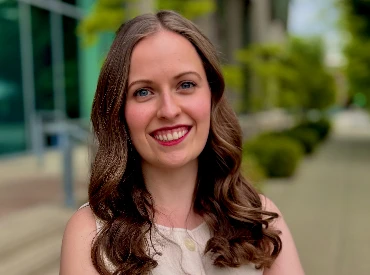3499 - Effect of Same-Day Volumetric Modulated Arc Therapy on Resource Utilization in Rapid Access Palliative Radiotherapy Clinics Using a Radiation Oncologist-Initiated Automated Planning Script
Presenter(s)

E. O'Reilly1, M. Golshan2, N. Chng3, L. Bartha2, L. Drummond2, D. B. Hoegler2, N. Becker2, and B. Mou2; 1BC Cancer, Vancouver, BC, Canada, 2BC Cancer, Kelowna, BC, Canada, 3BC Cancer, Prince George, BC, Canada
Purpose/Objective(s): Rapid access palliative (RAP) radiotherapy (RT) clinics enable patients with symptomatic metastases to access urgent consultation, simulation, and treatment on the same day. Although volumetric modulated arc therapy (VMAT) can improve conformity, many RAP-RT clinics use unplanned field-based techniques for efficiency. This study aimed to examine the effect of same-day rapid VMAT implementation using the Northern Plan Automation Service Treatment Planning Automation Service (NoPAUSE-TPAS) on throughput in RAP-RT clinics at a regional cancer center.
Materials/Methods: NoPAUSE-TPAS is a script that can be configured to perform automatic plan optimization in the treatment planning system at the request of the radiation oncologist in as few as one click. This retrospective study included all patients seen in RAP-RT clinics between Feb-Aug 2024 following introduction of NoPAUSE-TPAS, compared to a data set from Jan-Jul 2019. Baseline patient, tumor, and treatment factors were analyzed using descriptive statistics. Utilization rates of same-day VMAT were assessed along with quality measures including time from consult to simulation, time from consult to first fraction, VMAT optimization time, and proportion of unused consult and simulation slots.
Results: RAP-RT clinics saw 202 patients in the 2024 cohort and 213 in 2019. In 2019, 195 (91.5%) patients received RT to 249 sites, compared to 189 (93.6%) patients whom received RT to 246 sites in 2024. Most patients (70%) received RT to one site. Bone was the most common site treated (71%). The most common fractionation was 8Gy/1 (57%), followed by 20Gy/5 (32%). Of the bone metastases, 66.5% were treated with a single fraction in 2019, compared to 81.4% in 2024. Among 245 available consult and simulation slots in 2019 and 227 in 2024, 13.1% of consult and 13.1% of simulation slots were unused in 2019, compared to 11.0% of consult and 9.7% of simulation slots in 2024. Most patients (94.9% in 2019 and 90.5% in 2024) started RT the same date as consult. Within the 2024 cohort, 133 (54.1%) sites were treated with an unplanned technique and 113 (45.9%) with RAP-VMAT. Of the sites treated, 193 (78.5%) were eligible for NoPAUSE-TPAS, with 113 (58.5%) of eligible sites receiving treatment with VMAT. 84.9% of VMAT treatments were delivered the same day as the consult. Median time for RO-run TPAS optimization was 12 (interquartile range, 9-16) minutes.
Conclusion: Same-day VMAT using NoPAUSE-TPAS was implemented in RAP-RT clinics with no scheduling changes impacting patient throughput and similar resource utilization compared to historical data. Utilizing automation technology to improve efficiency can permit same-day VMAT for palliative RT.
